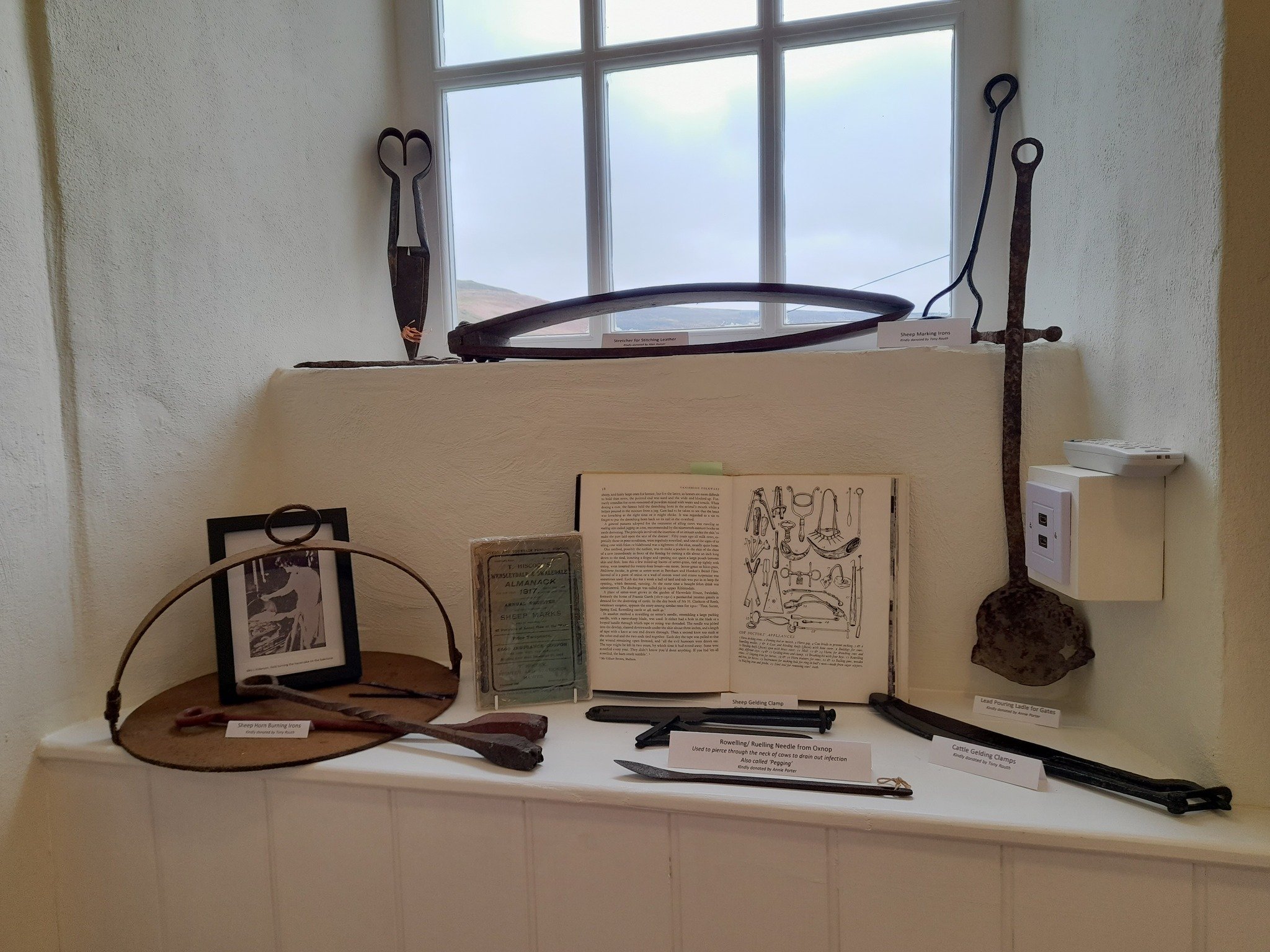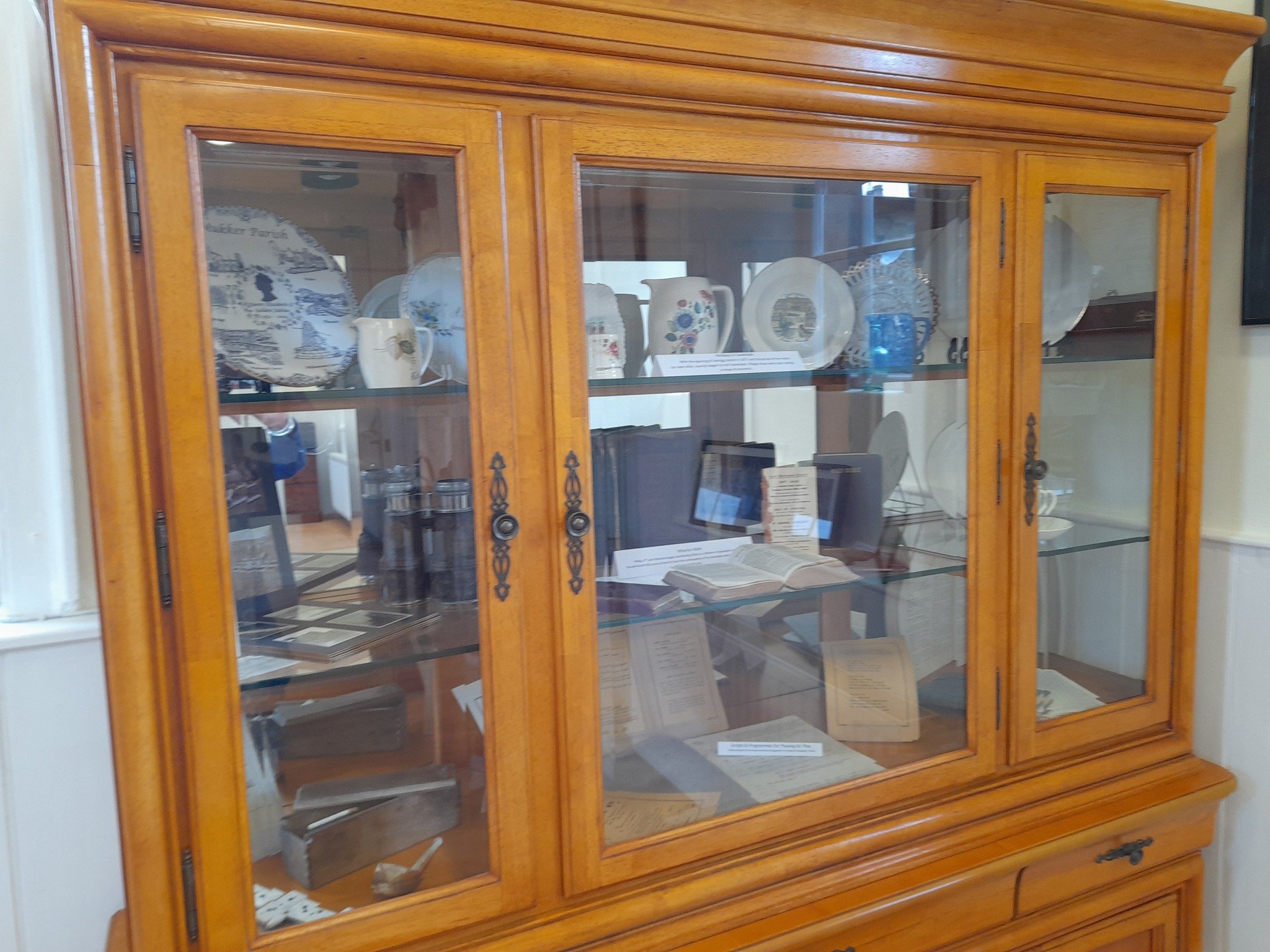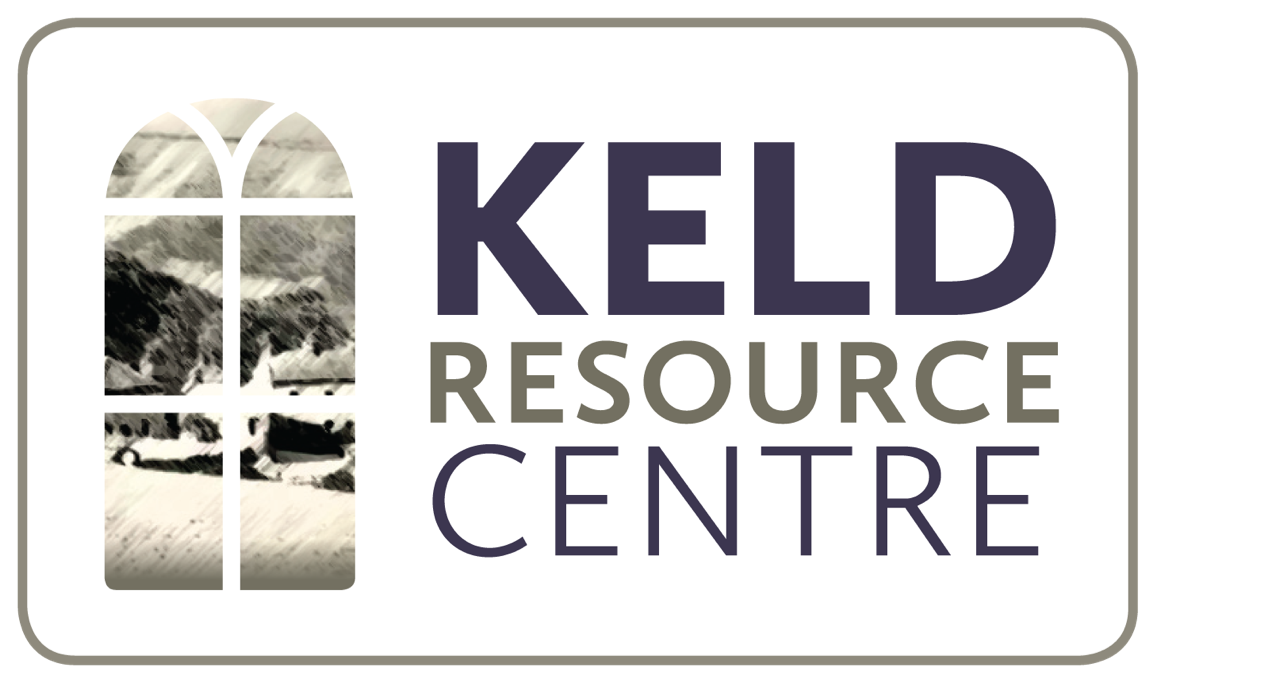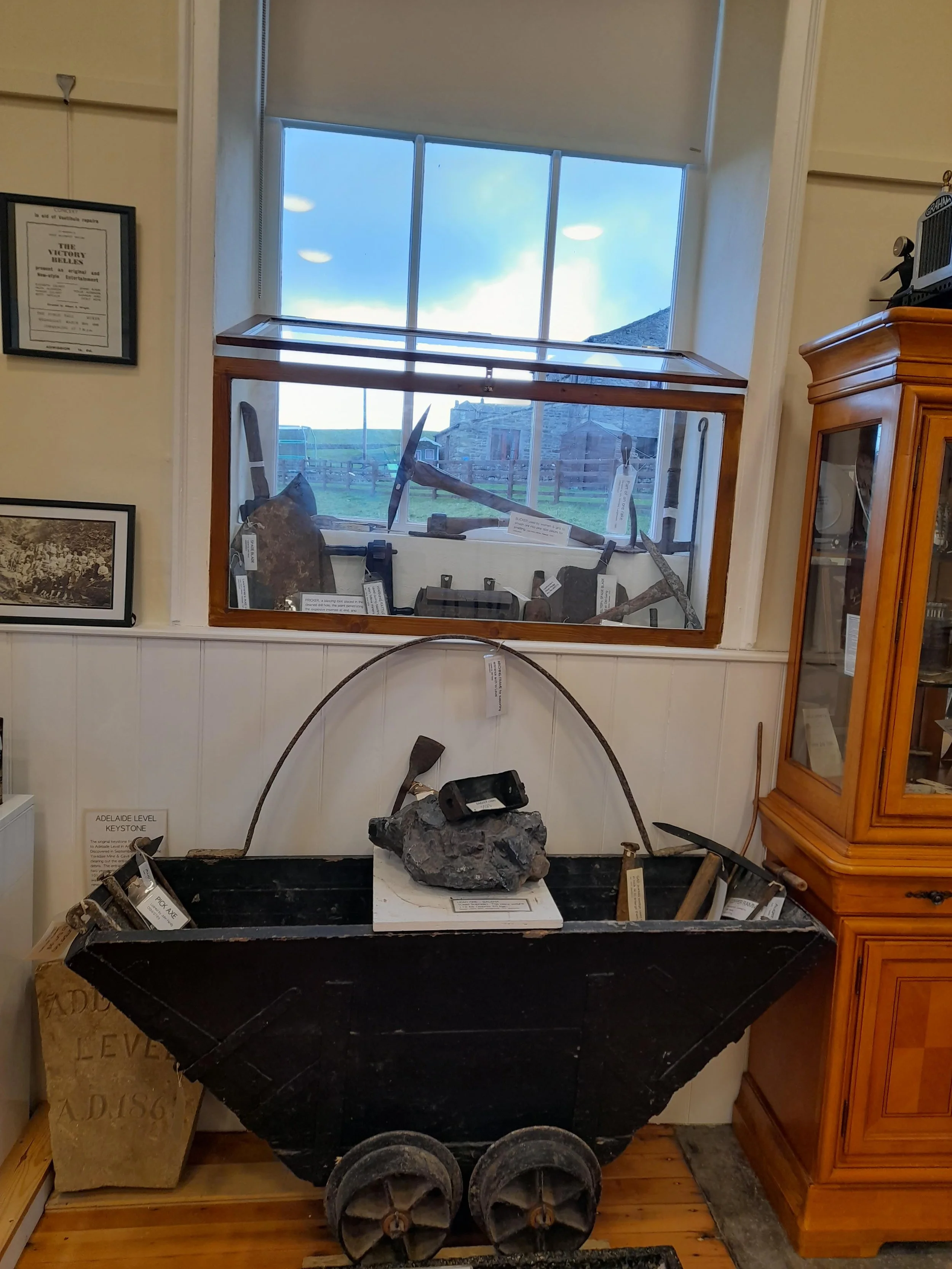Old School Museum
The Old School Museum tells the story of Upper Swaledale life. Housed in the newly-restored former Keld School, find out about the farmers and leadminers of the dale; how they worked, lived, played and prayed.
Many local people have kindly donated artefacts related to farming and local history, for which we are very grateful. The centre also incorporates the Swaledale Museum Collection, which has been the responsibility of Keld Resource Centre since autumn 2022.
The Old School is open daily from 9am-5pm. Admission free.
If you’re not able to visit us soon, you can enjoy the highlights of the collection through a virtual visit.

The Grade II listed school building was competed in 1842, after funds were raised to provide suitable premises for the education of local children.

After the school closed in 1973, the building went through various uses before being used as a store. In early 2022, local craftsmen set to work restoring the buildings to play a new role.

On 1 May 2022 Keld School reopened its doors, welcoming the first visitors for over 20 years. A few months later, we welcomed the Swaledale Museum Collection much of which is now on display.

We have recreated a typical schoolteacher’s office of the Edwardian period at the north end of the building. This now houses our local history archive.

The schoolteacher would have used a desk like this one for marking, lesson preparation and record-keeping. Many of the log-books for Keld Resource Centre still survive, and give a fascinating glimpse into daily life in the village.

This desk was used by generations of schoolchildren in the Keld schoolroom. After the school’s closure it was acquired by a local resident. Beautifully restored, it is now back in the school after nearly 50 years.

This is the main schoolroom, in which children of all ages were taught together. It now houses our main display of local heritage artefacts.

These traditional tools were used by generations of local farmers to harvest the hay and prepare it for use as winter feed for the animals. Before the arrival of tractors it was hard, manual work.

These traditional tools were used in the rearing of sheep and cattle on local farms for tasks such as treating basic infections and marking the sheep to indicate who owned them.

These iron bars come from a cast-iron kitchen range. Ranges would be found in the kitchens of most local farmhouses and were used for heating, baking and hot water.

These butter pats were used in the buttermaking process to press the churned butter into shapes for storage. The flat iron would have been warmed on the range and used to iron clothes on washing day.

There was no electricity in Keld until the early 1970s. Before then, people used Tilly lamps like these during the hours of darkness.

Managing the local moorland requires careful burning of the heather from time to time. This burner would have been used as part of that process.

This long-handled wooden ladle would have been used in cheese or butter making in local farms.

Local people traditionally made their own clogs to use as footwear. Here are some examples together with a clogging iron. The magnificent copper kettle came from the long-closed Cat Hole Inn in Keld.

Traditional kitchenware like this would have been a familiar sight in farmhouses in Upper Swaledale.

We hope you enjoyed your virtual visit to Keld School. Look out for details of our opening days when you can visit directly and see the exhibits for yourself.






